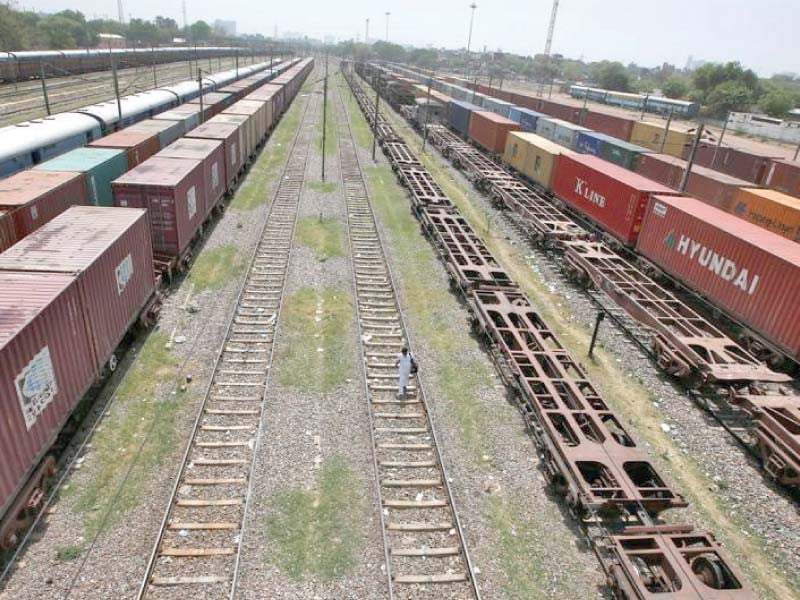LAHORE:
Pakistan Railways (PR), once the backbone of the nation’s transportation network, is continuously grappling with a variety of challenges. From financial woes to infrastructural decay, the railway system, which was once symbolised as the country’s industrial and transportation strength, is now struggling to stay on track. Although it seems that the cash-strapped entity is moving in the right direction, transportation sector experts believe that the railways’ issues are unique, and without comprehensive planning and consistency in implementing those plans, the railway’s revival could only be a distant dream.
Historically, PR was a vital and preferable mode of transport for passengers and freight alike. Established during the British colonial era, it played a significant role in the economic development of the region. However, over the decades, mismanagement, lack of investment, and political interference have led to its steady decline. Aging infrastructure, outdated rolling stock, and a lack of technological upgrades have left the system inefficient and unreliable.
According to former managers of the public entity, one of the most pressing issues of the railways is its financial instability. The organisation has been running at a loss for years, with expenditures far outweighing revenues. The deficit has been exacerbated by corruption, poor management, and underutilisation of assets. Despite periodic bailouts from the government, the financial health of PR remains precarious. The recurring operational losses have led to deferred maintenance, resulting in frequent derailments and accidents, further eroding public confidence.
As per official statistics, in the fiscal year 2022-23, railways earned Rs63.250 billion. However, to bolster its operations, the railways received a grant of Rs47.5 billion from the finance division. In the first nine months of FY24, the management stated that it has managed to earn Rs66 billion and is hopeful to surpass the target of Rs80 billion by the end of the year. Still, it will need billions of rupees as a bailout package to meet its finances.
“Pakistan Railways is also open to environmental challenges, the main example of which are the floods, which hit the country almost every year,” said a serving officer of the railways. “The entity is already operating with old infrastructure; the floods or other natural calamities only add burden to its financial resources,” he added.
The railway infrastructure in Pakistan is in dire need of modernisation. The tracks, many of which date back to the colonial era, are incapable of supporting high-speed trains. Signal systems are outdated, and there is a severe shortage of modern locomotives and carriages. The inadequate infrastructure not only hampers efficiency but also poses significant safety risks.
“In this backdrop, the Main Line One (ML-1) project stands out as a potential game-changer as ML-1 is the main railway artery in Pakistan, connecting Karachi in the south to Peshawar in the north, passing through major cities like Lahore and Rawalpindi. The project aims to upgrade this critical line to improve speed, capacity, and safety,” said another official of Pakistan Railways.
Pakistan is looking towards China for financial assistance to undertake this massive project. The proposed $6.8 billion loan from China is part of the broader China-Pakistan Economic Corridor (CPEC) initiative, which seeks to enhance connectivity and trade between the two countries. The ML-1 upgrade includes doubling the tracks, modernising signalling systems, and enhancing safety measures.
“This project was believed to be the lifeline of CPEC and railways, but unfortunately, after almost a decade, no solid progress has been made in this regard,” the official said, adding, “We all are responsible for irritating the Chinese through our missed commitments in materialising such an important infrastructural project.”
Beyond the ML-1 project, Pakistan Railways faces several other challenges. The lack of an integrated transport policy means that railways often compete with road transport rather than complementing it. There is a need for a holistic approach to transportation that leverages the strengths of each mode of transport.
“Operational inefficiencies, including scheduling issues and freight management, need to be addressed. The introduction of modern logistics, which railways already have initiated, and supply chain management practices could significantly enhance the railway’s freight capabilities, offering a more sustainable and cost-effective alternative to road transport,” the official added. “Reviving the railways is not just about upgrading tracks and trains, it’s about rebuilding an institution that can drive economic growth and national integration. The journey is full of challenges, but with the right vision and commitment, this entity can once again become a symbol of progress and connectivity,” the official added.

